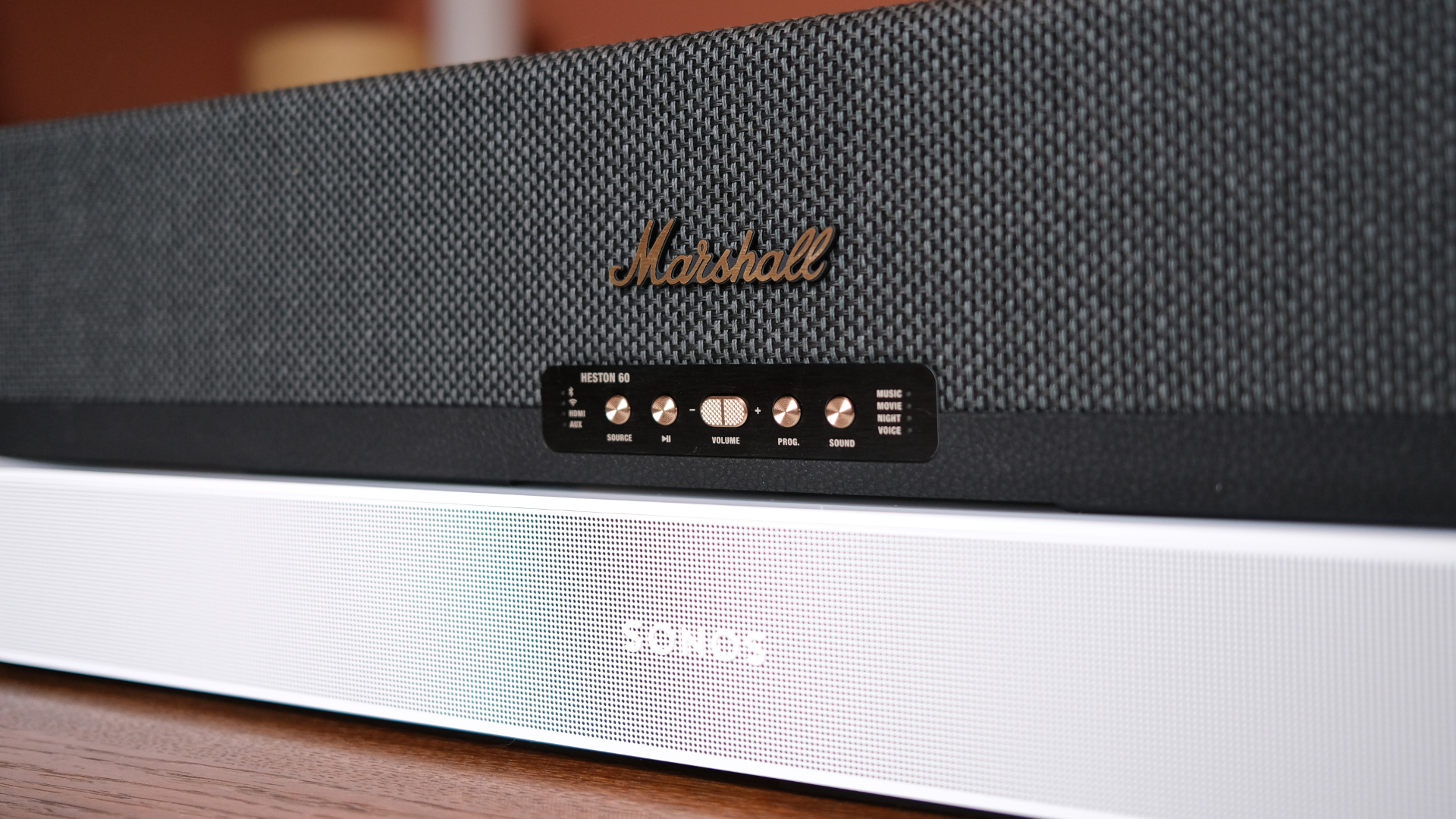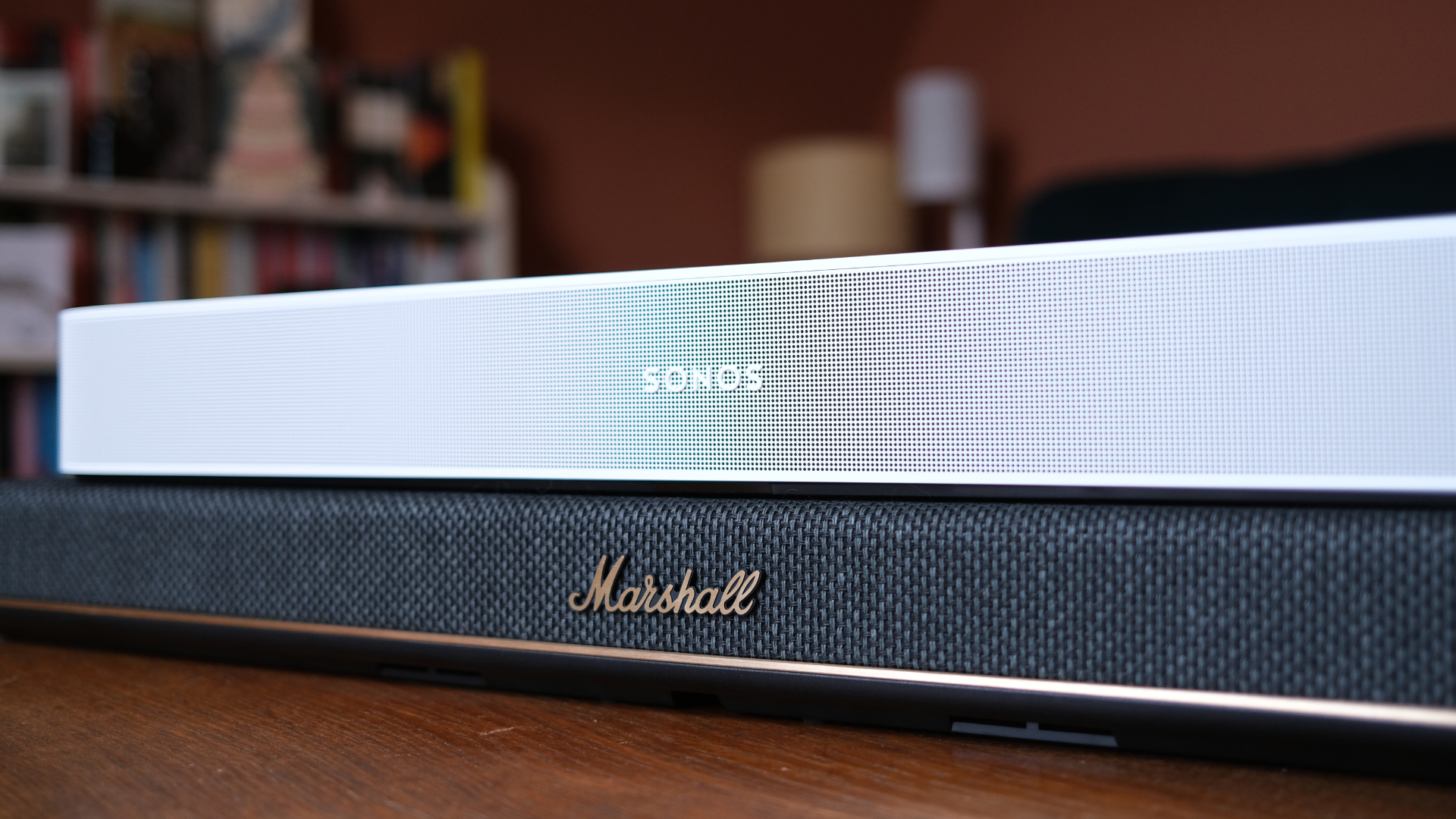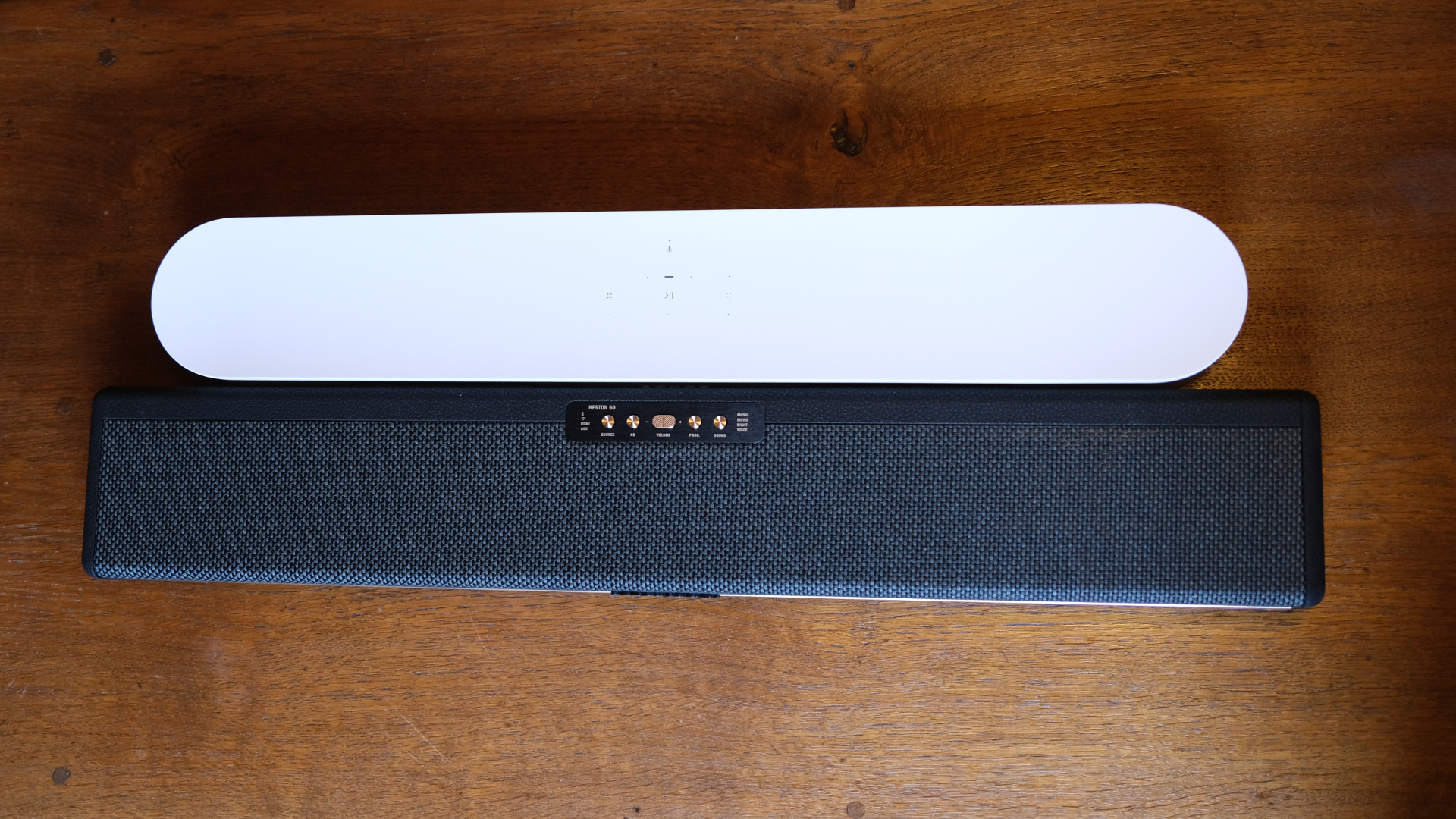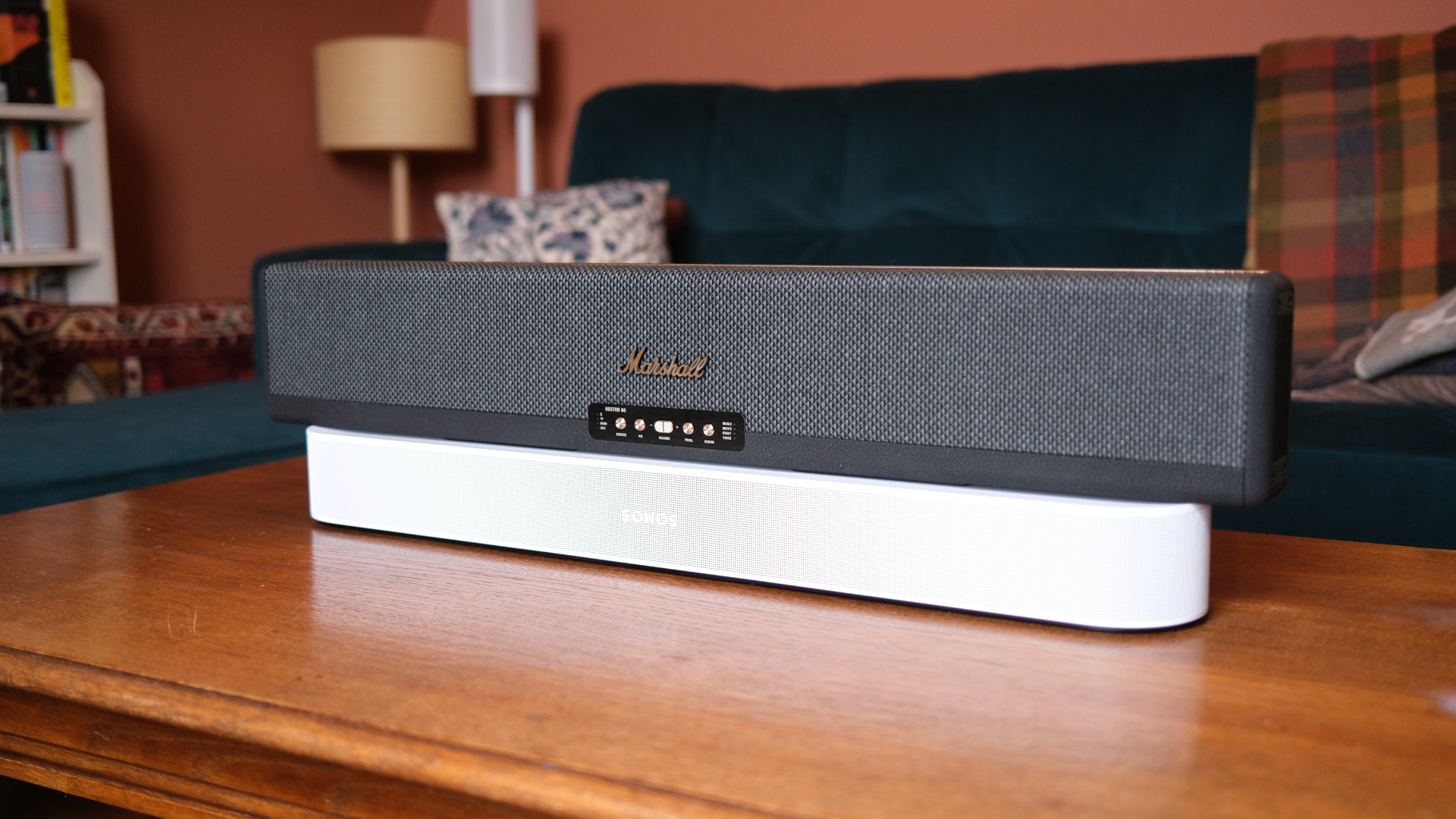I used the soundbar Marshall hopes will kill the Sonos Beam – so which did I prefer?
Marshall Heston 60 vs Sonos Beam Gen 2


The moment Marshall first announced it was making soundbars, I started to assume that it would be after Sonos' lunch sooner rather than later. Sure enough, although the top-of-the-line Heston 120 was the first launch, it didn't take long for Marshall to release the Heston 60, which seems directly aimed at competing with the Beam.
I'm lucky enough to have used both the Heston 60 and the Sonos Beam (Gen 2) in recent weeks, swapping back and forth to compare them both. Which is best, though? Well, keep reading to find out my detailed thoughts.

Price: £449, €499, $449, AU$699
Sonos' second-gen Beam has been on the market for a few years now, but it doesn't actually scream out any need for an upgrade. It offers superb sound for its size, and crucially slots into any Sonos system without any trouble, as part of a multi-room setup.

Price: £499, €599.99, $699, AU$999
Marshall's first compact soundbar ever, the Heston 60 is a beautiful bit of design that ticks all the boxes we expect from the brand. It's more striking to look at, and sounds excellent, making for a bold entry into the market (at a chunky price).
Sonos Beam (Gen 2) vs Marshall Heston 60: Design and features

These two soundbars come from very different directions in terms of aesthetics. Sonos iterated on its first-gen Beam, removing the cloth mesh and going for a very modern look, especially in the white version I have.
The Beam (Gen 2) is basically plastic all over, albeit sturdy, heavy-duty stuff, and has touch controls on its top face in case you need them. Its inputs are round at the back, and the soundbar is impressively compact, making it easy to fit on even smaller stands.
Marshall's is a little bigger, but also very different to look at. It summons the ghosts of bygone Marshall amps, with a lovely fabric finish and brassy control buttons. You can also arrange it in two different ways, depending on whether you're wall-mounting it or leaving it on a surface, which is cool.

In terms of features, both soundbars have multiple sound modes to choose from, including bass-dampening night modes and dialogue-boosting voice ones. Marshall adds a welcome feature by letting you tune how intense the effects of each mode feel, but Sonos punches back by letting you turn them both on at once, making for just about a draw.
Where Sonos pulls away, though, is in how modular the Beam (Gen 2) can be. You can add a variety of wireless Sonos speakers to it as surrounds, something the Heston 60 doesn't allow at all right now. You also have more multi-room flexibility with the Beam, in case you have other Sonos speakers in other rooms.
Get all the latest news, reviews, deals and buying guides on gorgeous tech, home and active products from the T3 experts
Sonos Beam (Gen 2) vs Marshall Heston 60: Sound and ease of use

If you leave the Sonos Beam (Gen 2) and the Marshall Heston 60 on their own to handle TV audio without any additional hardware, there really isn't much to pick between them in sound terms.
Both are excellent, with Dolby Atmos compatibility to ensure that they can handle the full range of surround sound (in theory). Because of its design, though, the Heston 60 definitely has an advantage when it comes to the verticality of its soundstage, since it has upfiring drivers that the Beam (Gen 2) can't quite match.
That's nitpicking, though, and you have to listen quite hard to discern the difference. For most people, the main contrast will come in the form of a slightly more precise sound from Sonos, compared with some added warmth from Marshall. That means taste plays a big role here.

For one thing, both soundbars let you tune and edit their EQ settings, meaning you can change things to your tastes anyways. For me, though, this means that a lot of my judgment between the two is about ease of use.
Here, I think Sonos scores a clear win, with an app that I found more responsive and slick (as it continues its rebirth following a shambolic launch). I'm more reliably able to find the settings I want quickly, and the fact that I can control a bunch of other speakers easily, too, makes it more powerful.
It's also freer of hitches. In Sonos' app, I never suffer drop-outs in audio while swapping between settings, while Marshall's routinely made me miss a second or two of audio, which is rewinding territory when you're watching something as dialogue-dense as The Wire.
Marshall's app is no problem, to be clear, but it's just not as responsive as the best in the business. Another more significant gripe is that the Heston 60 doesn't auto-switch between inputs (or at least it didn't for me). That's a huge quality of life feature that Sonos' soundbar nails, ensuring you actually don't need to reach for the app or its buttons nearly as often.
Sonos Beam (Gen 2) vs Marshall Heston 60: Verdict

I'm hoping it's clear from everything I've written so far that there's no wrong choice between the Heston 60 and the Beam (Gen 2). Both sound terrific and will provide massive upgrades over the sound that your TV might otherwise be outputting.
That said, I can't pretend I don't have a favourite, and therefore a winner: the Sonos Beam (Gen 2). I think it shows the polish that more experience in the market brings, and the fact that you can far more easily expand on it down the line seals the deal. It's slicker to use, with basically the same compatibility, and I think it can more easily fit into most aesthetics, too.
Price is a question, too, since the Beam (Gen 2) is older – it gets more frequent discounts and sales, although those will doubtless start to appear for the Heston 60 in 2026, too. Right now, you can get the Beam for 24% off in the UK, for instance, which opens up a big value gap that even further underlines my choice.

Max is T3's Staff Writer for the Tech section – with years of experience reporting on tech and entertainment. He's also a gaming expert, both with the games themselves and in testing accessories and consoles, having previously flexed that expertise at Pocket-lint as a features editor.
You must confirm your public display name before commenting
Please logout and then login again, you will then be prompted to enter your display name.